Bay laurel (Grecian laurel, true laurel, sweet laurel) is a fragrant evergreen tree originates from the Mediterranean.
Most gardeners grow this plant from the Lauraceae family because of shiny, dark-green, leathery foliage which is an excellent, aromatic seasoning. Become one of them and plant your tree as soon as possible.
Facts about Bay Laurel
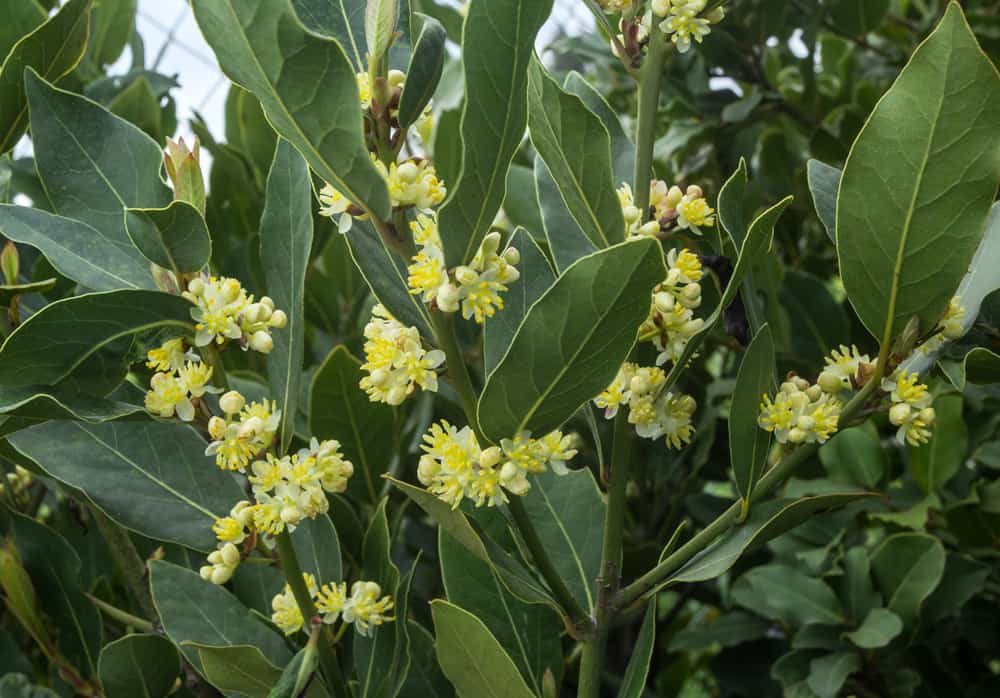
Bay laurel is considered one of the oldest trees cultivated by people. This plant has been symbolizing victory and high social status since ancient times.
For example, ancient Greeks made crowns of its leaves for the best athletes in 776 BC. After that, the Roman emperors wore a wreath made of Bay laurel leaves to confirm their ‘divine lineage.’
One more custom took place during the Renaissance. Doctors, who completed the university examinations, wore berries and branches of this plant as an adornment. That was the time when the word ‘baccalaureate’ used for the first time.
Even though Bay laurel can reach 25 to 55 feet (7.6 – 16.8 m) height when it is left to grow freely, most gardeners prune it regularly and prefer having 2 to 6 feet (61 cm – 1.8 m) high shrubs.
Types of Bay plants |
|
|
Bay Laurel |
Laurus nobilis |
| California bay leaf |
Umbellularia californica |
|
Mexican bay leaf |
Litsea glaucescens |
| Indian bay leaf or malabathrum |
Cinnamomum Tamala |
|
West Indian bay leaf |
Pimenta racemosa |
| Indonesian bay leaf |
Syzygium polyanthum, Salam leaf |
It is a dioecious plant, which means that there are separate ones with male and female blooms. Flowers are small, elegant, and yellow, and you can see their pairs next to leaves.
Over time, they transform to tiny, shiny purple berries with one seed. They are eatable, and you can use them as a seasoning as well. Unfortunately, if you grow Bay laurel in a pot, you probably won’t have the opportunity to see the blooming of your tree.
One more thing! You can prune this ornamental tree into numerous topiary shapes or simply grow it in the windowsill as a kitchen herb.
Propagation of Bay Laurel
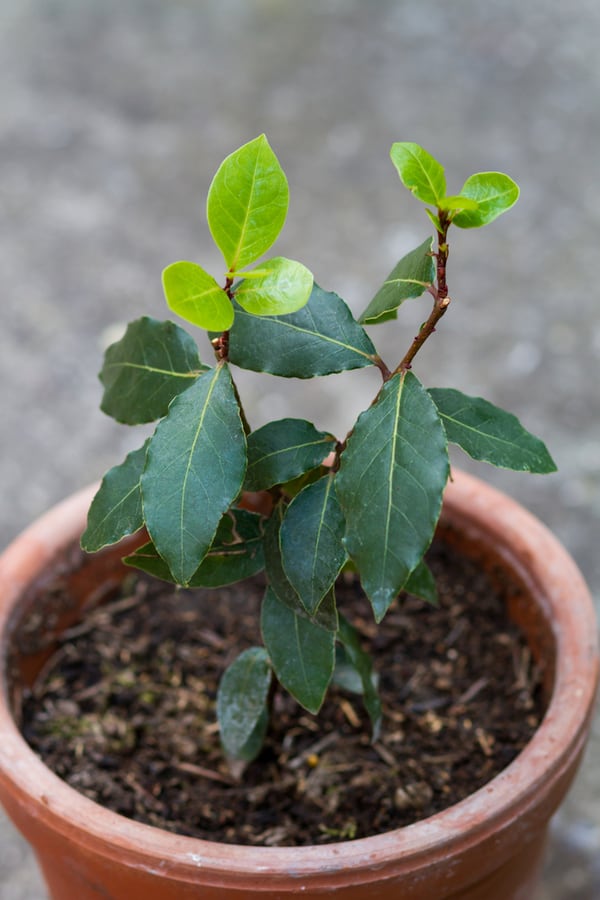
It is quite tricky starting Bay laurel from the seeds. Plus it takes too much time (usually more than six months) and effort with an uncertain outcome. There are much better ways to get a healthy and vigorous plant. There are your options:
- Sowing – Begin with collecting the seed-bearing drupes. After removing the fleshy outer layer, sow these seeds into a pot filled with loamy soil. Choose a sheltered place for their growth. You can transplant young seedlings in the garden the second spring from the moment of sowing.
- Propagation from cuttings – This method requires setting new, softwood cuttings into a soil-less medium. Collect them in late spring, but semi-ripe cuttings appearing in late summer are good as well. You can transplant them in the garden in their second year.
- Propagation by air layering – That means that you should wound your tree and fill it with sphagnum moss. Once you spot new-formed roots in the wound, you should cut off the branch and plant it in the garden.
- Seedlings – Unfortunately, propagating Bay laurel is pretty tricky, and purchasing young seedlings from a local nursery or Amazon is probably the best solution you have.
Bay Laurel Potting and Repotting
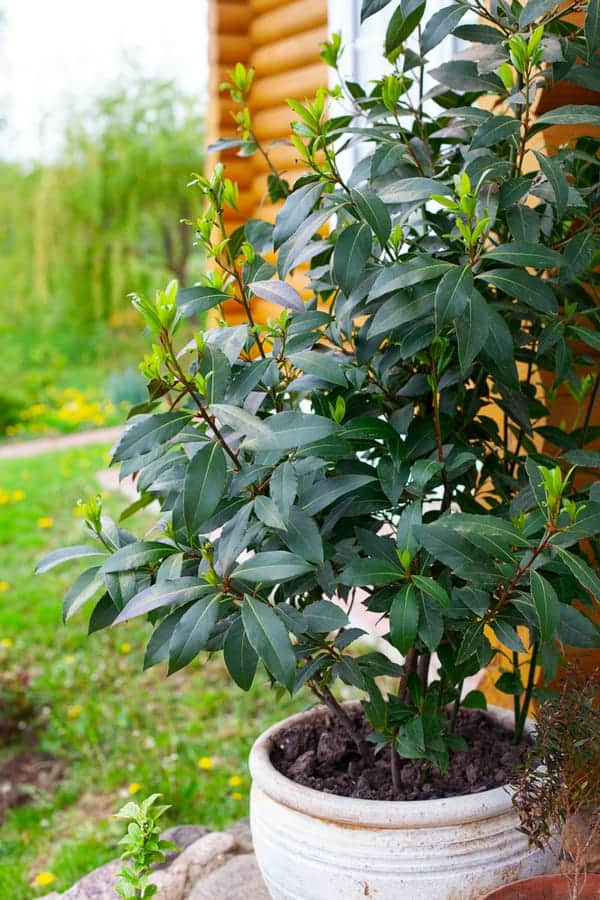
Even though you live in one of the Northern States, you can grow Bay laurel in a container for decades. Don’t buy a pot deeper than 12 inches (30.5 cm) because you need to keep the size of your plant under control.
Usually, the container of 5 to 6 gallons (19 – 23 l) should be fine for a tree about 4 to 6 feet (1.2 – 1.8 m) tall. Such pot has a base broad enough to protect your plant from overturning when the wind blows.
Avoid repotting your tree once in three to five years. When the time to repot the plant to a bigger pot comes, provide proper drainage, and plant it at the same depth as in the previous container.
How to Care Bay Laurel in Your Garden
Soil
Bay laurel doesn’t prefer particular soil, but it definitely needs to be well-drained with the PH from 6 to 7. However, every pH range between 4.5 and 8.3 will be good enough.
Surprisingly, this tree can thrive even on sandy and rocky ground. Just avoid planting it in the clay-rich ground since the roots will be exposed to unwanted waterlogging.
As for growing in a pot, you will get the best yields if combining cactus mix with the potting soil. Don’t forget to add excellent drainage material at the bottom of the container before planting.
Light
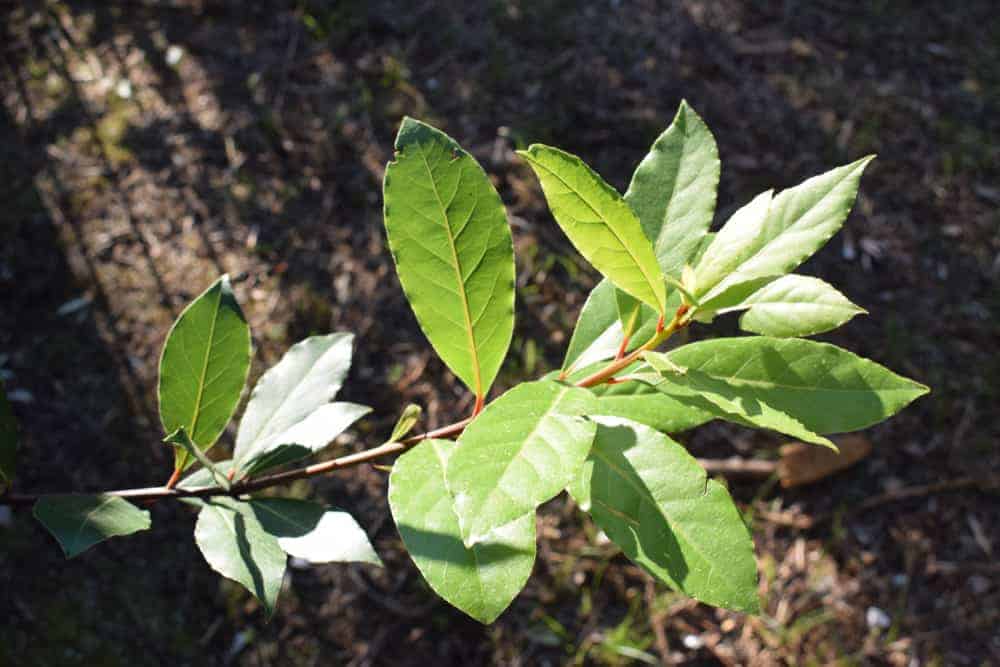
The way how to provide enough light to the healthy growth of your Bay laurel will depend on your decision to grow it indoors or in your garden.
If you plant the tree in a pot, you should place it as close as possible to a sunny window in winter. The chosen place should be protected from direct heat and drafts. On the other hand, outdoor plants will need full sun at least 6 hours a day and partial shade on afternoons during hot summer days.
Keep in mind that your plant will be much tastier when providing it with full sun at least a few months during the year.
Temperatures
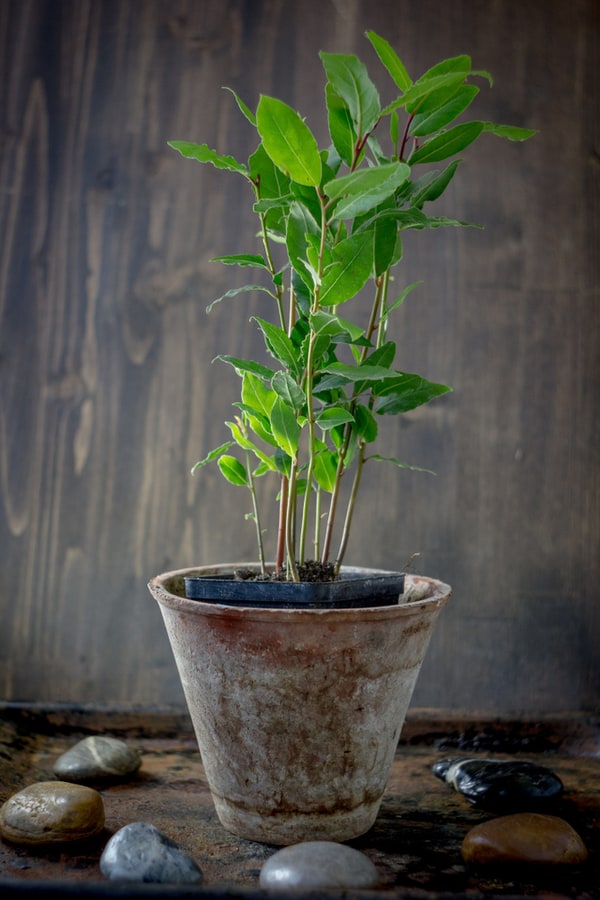
Always keep in mind that Bay laurel originated from the Mediterranean region, which means that this tree can’t stand low temperatures. Therefore, keep them safe indoors in winter.
This plant is highly frost-sensitive and can’t survive the temperatures lower than 20 F (-6.7 C). In fact, as soon as the temperatures drop below 32 F (0 C), you should bring your tree inside the house.
Watering
Since the roots of your Bay laurel are quite shallow, you can expect that your plant will need frequent and regular watering. It is especially important during hot summer days.
This tree needs to be well-watered even during the dormant period, but you should reduce the amount of water during winter.
At the same time, don’t over-water your plants, including newly transplanted ones, and be careful. Don’t allow that the base of the plant is exposed to excessively moist soil.
Also, take care to allow the ground to dry between two watering because the saturated soil will cause rot of the roots. In most cases, deep watering once a week will be sufficient to encourage vigorous root growth.
Fertilizing
Since Bay laurel is a slow-growing plant, you won’t need to fertilize it too much. The rhythm of feeding will depend on the place where you grow your plant.
- Indoors growing – If you grow it in a container, you should add balanced organic fertilizer high in nitrogen in spring and once again in mid-summer. That way, you will encourage lush growth of the foliage. For a better thriving, you may apply the liquid fertilizer twice a month from spring to summer. Never feed this plant in fall and winter.
- Outdoors growing – On the other hand, trees grown in the garden won’t require much feeding. One of the best options is 24-8-16 fertilizer. You should dilute 1 tbsp of it per 1 gallon (3.8 l) of water unless it is indicated otherwise on the label.
Pruning
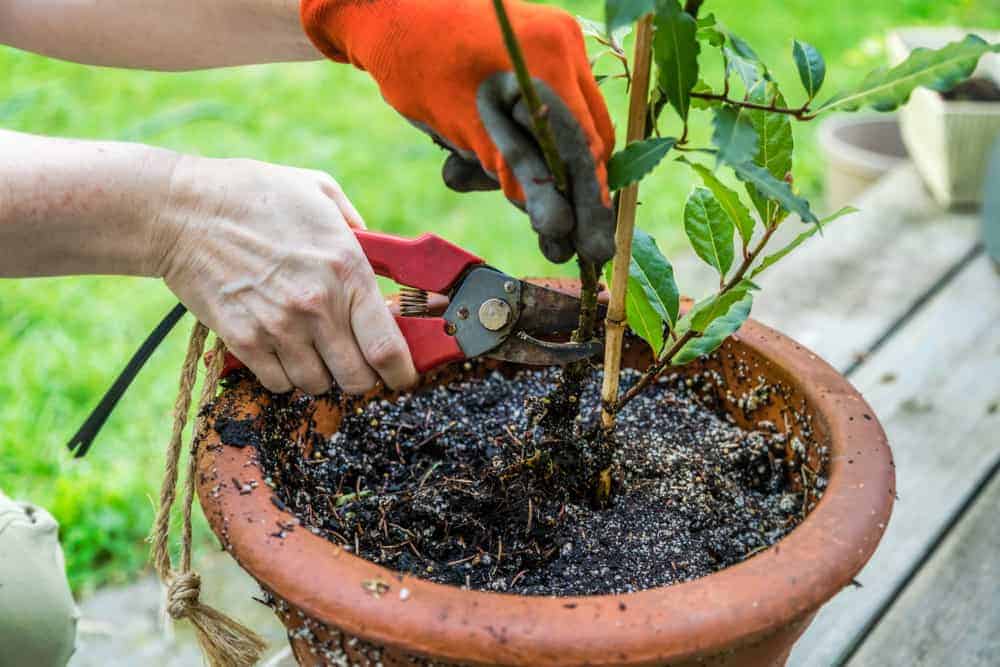
Firstly, you should decide if you wish to have a full-sized Bay laurel tree in your garden, or you prefer growing it as a shrub or topiary.
Left uncut, your Bay laurel can reach a height of 60 feet (18 m). If you grow it in a container, you should keep it pruned up to 5 to 6 feet (1.5 – 1.8 m) height.
If you are a pruning supporter, you should cut unwanted parts of your tree in late winter or early spring before the new season of growth begins.
That is also an excellent way to remove dead stems, suckers, damaged leaves, and crossing branches as well as to get the desired shape and size of the tree.
Pruning is an excellent way to allow undisturbed airflow, but keep in mind that re-growth of this tree is slow. Even though a full-grown tree requires hard pruning, you shouldn’t do it more often than once in every two to three years.
Both you and your plant will have benefits of pruning. This procedure will prevent self-seeding, which you probably don’t want to see anyway. On the other hand, you will get a more vigorous and healthy tree if you cut it regularly.
To prevent the spreading of pests, don’t forget to disinfect pruning shears using for this purpose. Simply put them in a water solution of bleach for five minutes before using.
How to Harvest Bay Laurel Foliage
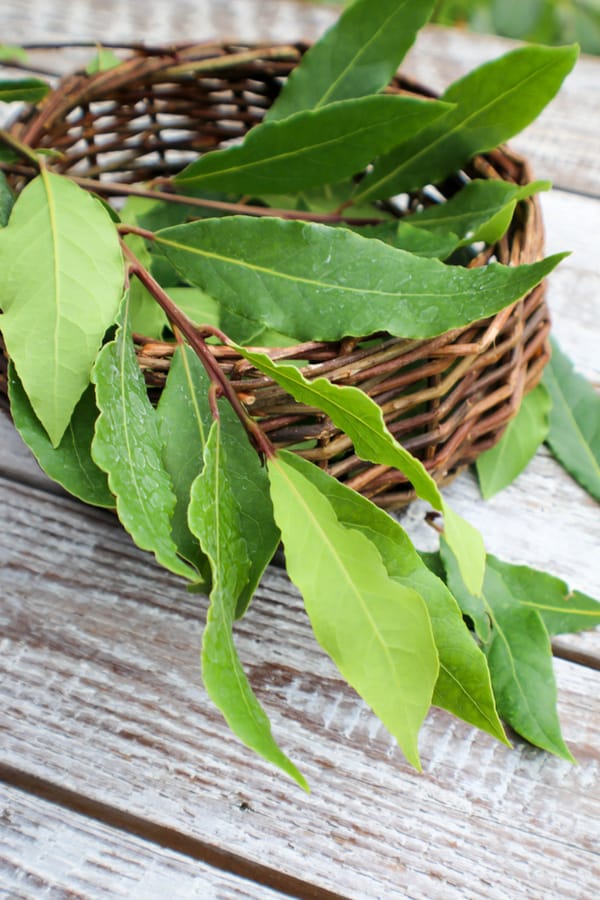
As soon as your tree is a few feet tall, you can begin collecting the foliage when needed. However, avoid harvesting before plants are at least two to three years old.
In general, there is no precisely defined moment for collecting leaves of Bay Laurel, but their flavor and fragrance will be stronger in the period of blooming.
The large, dark, mature foliage is more flavored and fragrant than tender new leaves. Believe it or not, you can use even dry leaves which fall off the tree since they won’t lose their fragrance right away.
How to Store Bay laurel leaves
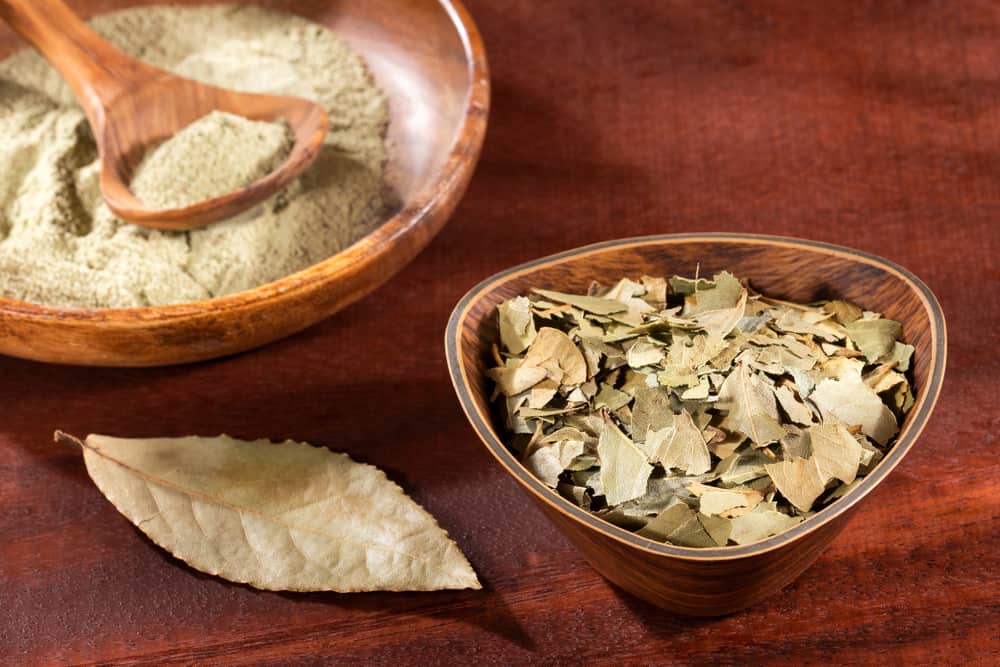
You can use Bay laurel leaves fresh or dried. Fresh ones have a more luxurious scent than those you have dried, but they can be a bit bitter. Therefore, you may decide to dry them.
To dry the leaves properly, take parchment paper and place the foliage in a single layer. After approximately two weeks in a warm room, the leaves are probably correctly dried and prepared for storing in an airtight jar.
Keep the leaves whole or make a fine powder by chopping them in a mortar. Don’t use dried ones longer than a year. You can also dry Bay laurel berries in the oven. Keep in mind that they have a stronger taste than leaves.
Bay Laurel Pests and Diseases
Bay laurel is mostly resistant to infections, and gardeners usually use that plant to get rid of pests and protect other plants in the garden. However, there are some issues you should solve if they appear.
Frost
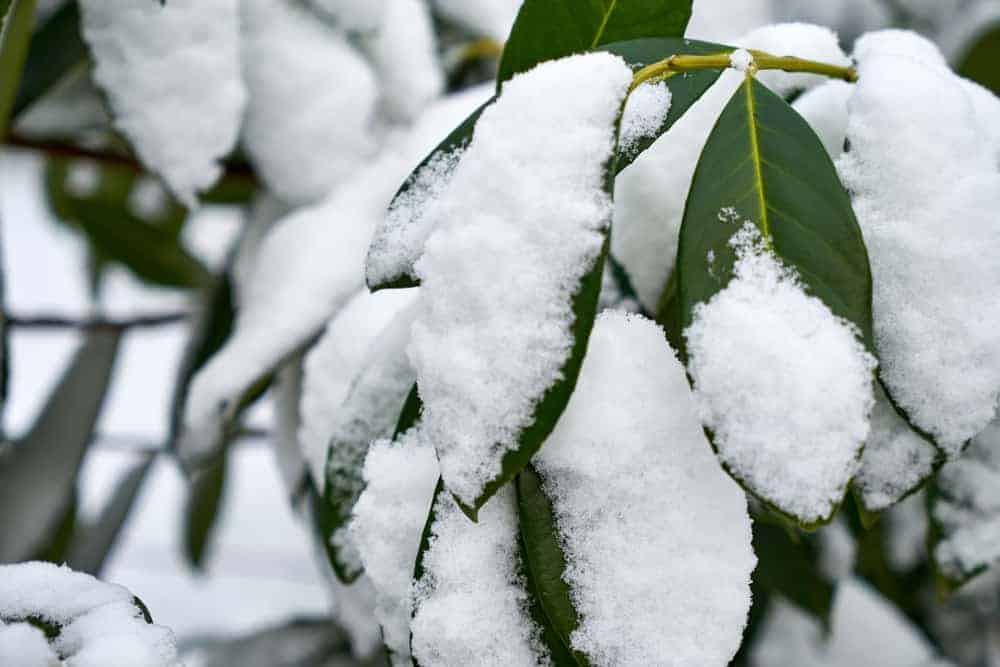
Even light frost can damage your Bay laurel, and its foliage will become brown and wilted. In most cases, the tree will recover in spring. If it begins dying back, you can try to solve the problem by pruning stems below the damage. Take care to your plant and let new shoots to form.
Yellow foliage
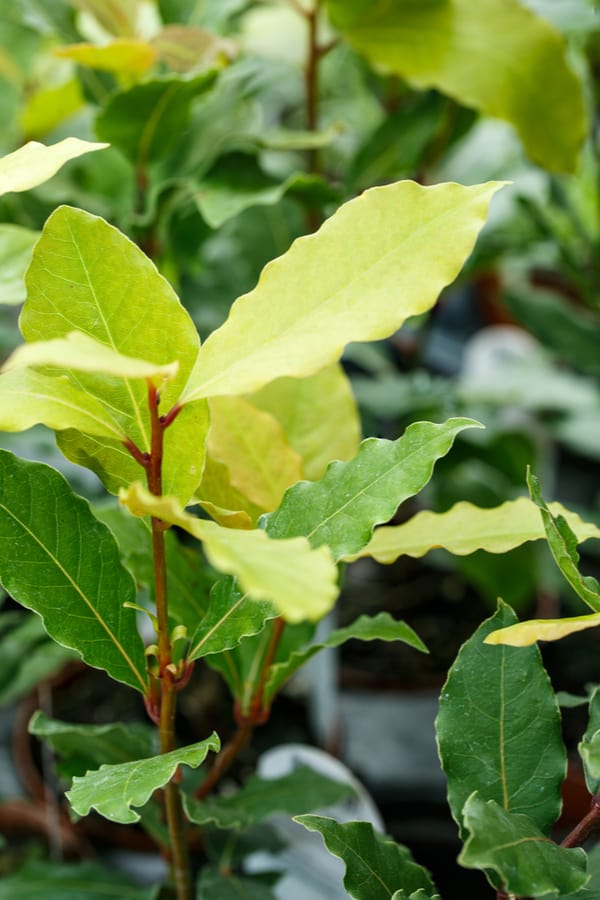
You can see yellow leaves on your tree when there is some problem with a nutrient deficiency in the ground or when cold weather or too soggy soil damages the roots.
Solve the problem by providing better drainage, applying general-purpose fertilizer, and pruning damaged branches.
Leaf spots
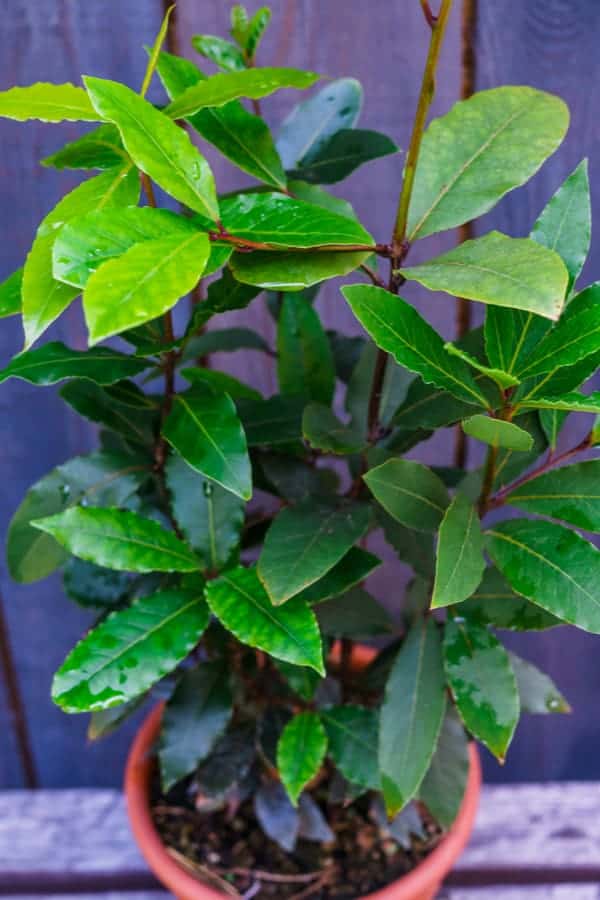
The occurrence of spots throughout the foliage is usually caused by overwatering. Improve drainage, let the ground dry, and prevent excessive soaking of the roots.
Mealybug
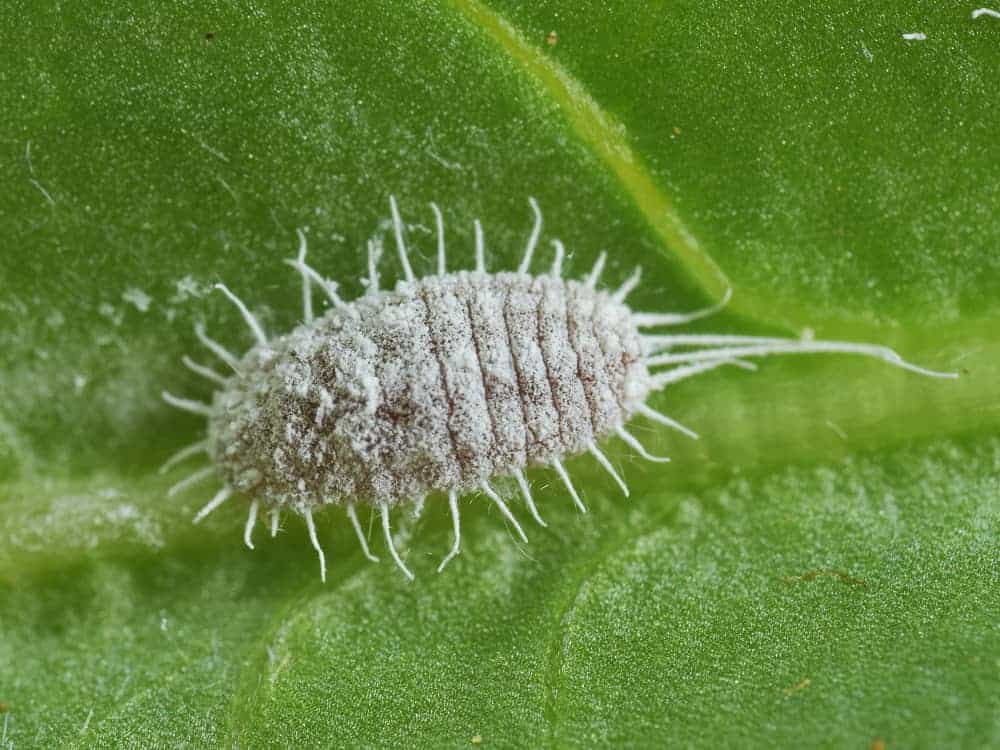
This insect may damage the foliage, which becomes sooty. Solve the problem by applying an excellent horticultural oil spray.
Aphids and scale
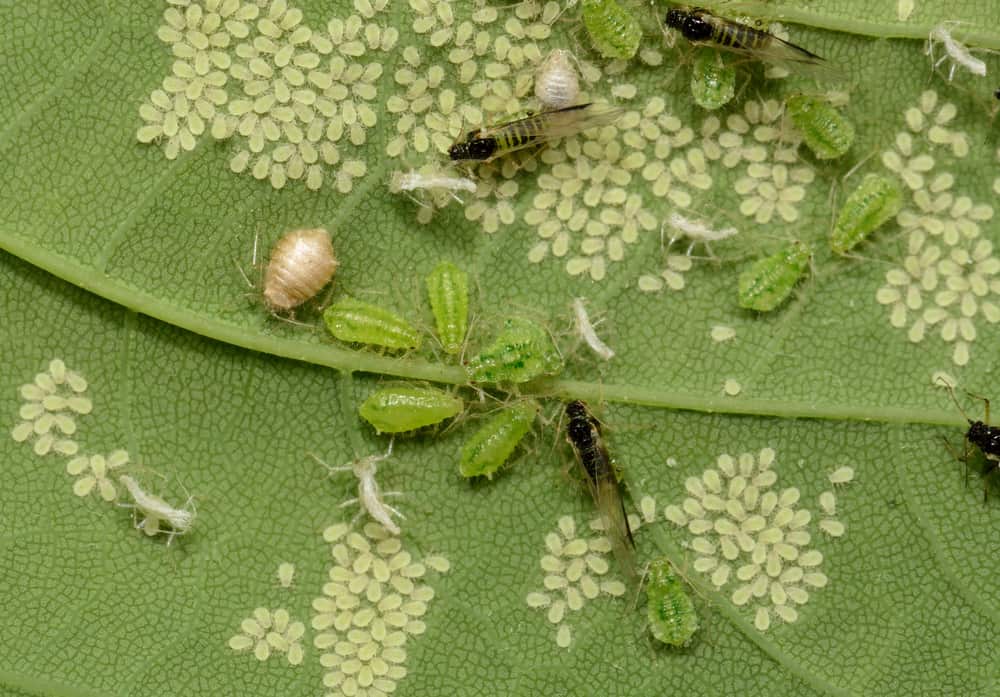
You can notice these pests only if your tree is weak and neglected. Take care of your Bay laurel, and it will thrive without any severe problem.
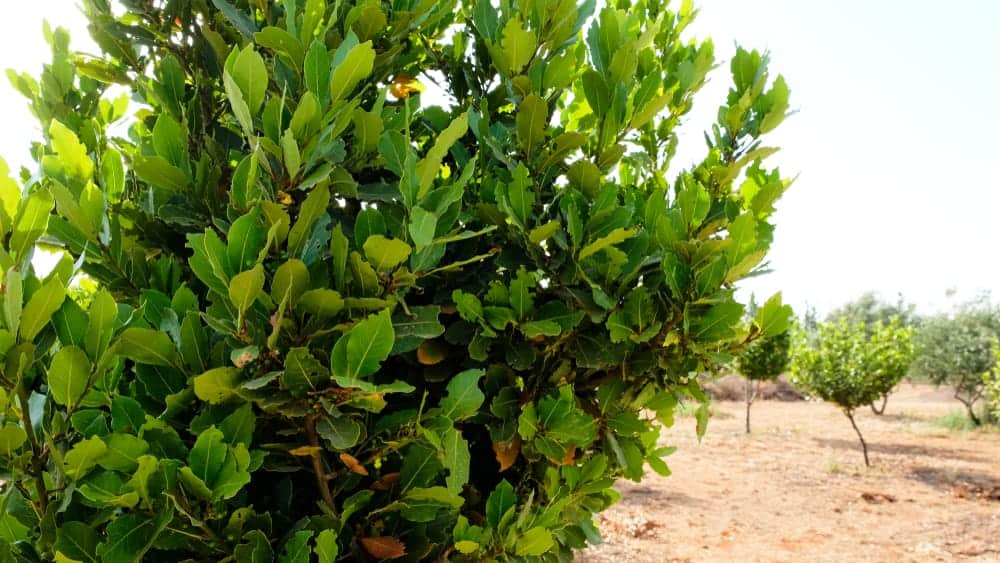
Leave a comment